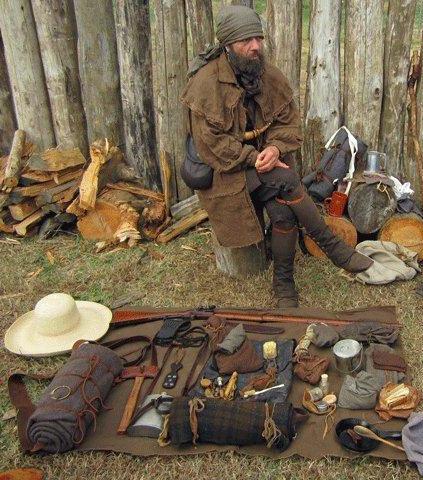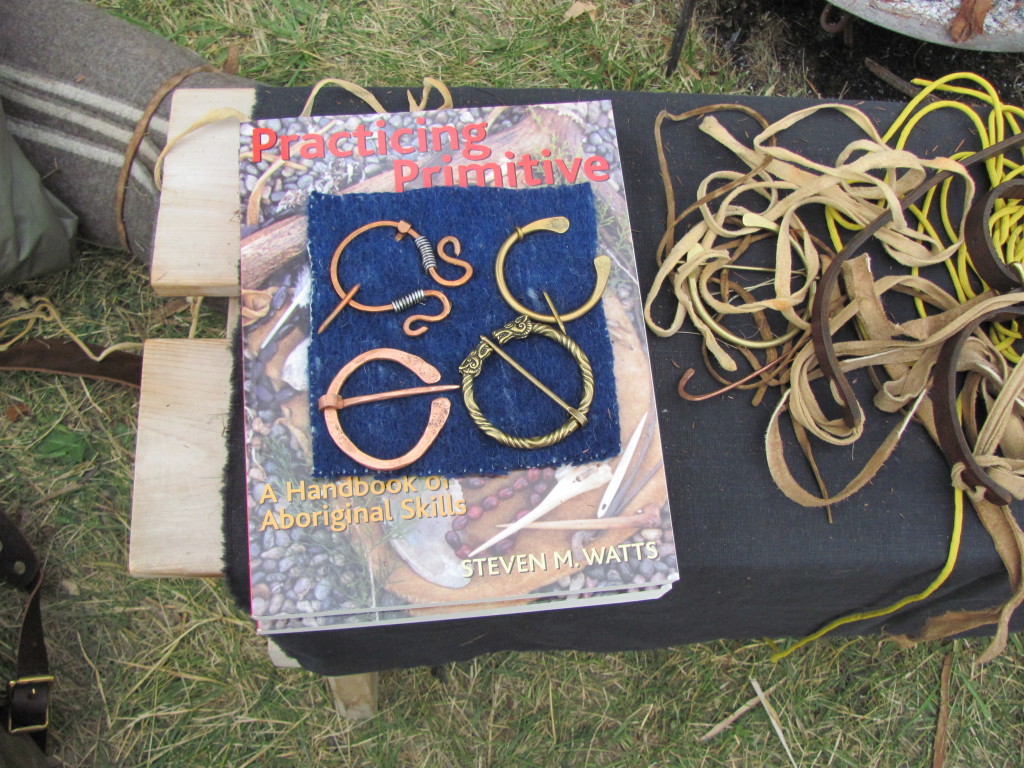This is part two of an interview done by the blog, Lost in the Woods. Part One is HERE.
By Liz Childers | Published December 9, 2011
In addition to directing the Aboriginal Studies Program at Schiele Museum of Natural History, Steve Watts is a member of the International Society of Primitive Technology. Their biannual publication is a great way to learn more about the subject. As we mentioned in part one of our interview, Watts, along with David Wescott, also keeps a classic camping blog.
What tools do you consider essential for a wilderness trip?
The specifics are determined by how I “go out”—in what style—primitive, Classic Camping, 18th century, etc. But, behind the specifics are your brain, your hands, edged tools and fire making tools. They all take different forms (depending on the style) but they are all the basic requirements no matter what the style.
If I looked in your wilderness survival kit right now, what would I find?
Well, with me, it all depends on which kit you look in. I have Stone Age kits, 18th century kits, Classic Camping kits, cowboy kits, etc. And, with each of them I have basic and more involved forms. To delve into the details of each is a book-length effort. All of them must meet the basic needs of outdoor living—shelter (including clothing), water, fire, food, and psychological well-being.

The basic kit takes many forms, depending on the time period (primitive, historic or contemporary). Packing for the Cherokee Campaign…Davidson’s Fort…on the North Carolina Frontier
Do you use any modern tools or techniques?
I try to keep current with gear and techniques, and I spent many years in the outdoors using mostly modern versions. I prefer more traditional tools and techniques because—well, because I just prefer them! In my earlier days I ran completely stone age/primitive trips with some of my advanced students, but today at age 65 I prefer to go out in the Classic Camping style. It’s not primitive and it’s not contemporary. It’s a beautiful style with canvas, high quality steel tools and honest grub cooked over an open fire. It’s perfect for an old woods loafer.
When you teach primitive skills, what is the primary focus? What skills do you feel are most important for campers or outdoorsmen?
I teach a wide variety of primitive skills because I have some long-term students that have been with me for more than 25 years and they are very motivated. I also enjoy teaching a wide variety of topics (from tools, to weapons, to pottery, to hides, to house building, to watercraft, to whatever) just to keep my self-entertained, challenged and fresh. I also try (and this is very important to me) to always put these skills into some kind of anthropological or historical context. It makes them more meaningful than just handy skills and tricks. I try to address these concerns in my book, Practicing Primitive.
The most important skills are those that make outdoor living not only possible, but enjoyable….edges and fire are always at the top of the list.

Blanket Pins sitting on a copy of Practicing Primitive by Steve Watts. Students attending one of Steve’s classes at Rabbitstick (2010) all made a pin like in the bottom left while learning about Blanket Technology.
What is the mission of the Society of Primitive Technology?
To promote the practice and teaching of aboriginal skills–to foster communication between teachers and practitioners– and to set standards for authenticity, ethics and quality.
What advice would you give to someone interested in learning primitive skills?
Read and study. Don’t listen to those know-nothings that say you can’t learn anything from books. Books are the elders of our culture. But….then…find the teachers, honor the teachers and practice, practice, practice. You can’t know too much, and you can’t be too skilled.




6 Responses to Steve Watts Opens his Wilderness Survival Kit(s) for Lost in the Woods (2 of 2)